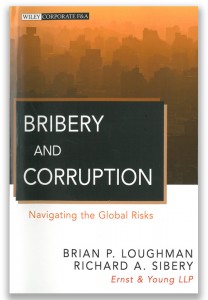After explaining relevant legislative regulations from around the world, the book outlines the aspects of the anti-bribery and corruption life cycle, which includes: set up compliance programs, policies, and procedures; conduct risk assessment; monitor the system; and perform anticorruption due diligence. Various tips are presented in each chapter, and there’s also a case study that shows how to perform a risk assessment. The fictitious “Steel Company Inc.” uses an external accounting firm to identify corruption risks and to evaluate the existing anticorruption program. One part of the case study reflects on how the forensic accounting team interviewed key personnel in various locations to identify areas carrying potential risks.
This book is valuable for those who work within companies, especially since employees share the responsibility of keeping their company in compliance with anticorruption legislation and regulations, as well as for external auditors, who ensure all bribery and corruption aspects in an engagement are covered.
As someone who works for a public service company that provides material tests and product certification services to local and international customers, I found the last two chapters to be my favorite. For the people in my organization, it’s essential that there’s no doubt about our professional integrity, objectivity, and independence. Anticorruption is a big aspect of our business culture, and, with regard to potential misconduct, we keep in mind that there are always two parties involved. Therefore, it’s important to understand the risks and red flags of each region (chapter 10) and industry (chapter 11). Knowing our markets and competitors helps sell our products, but knowing the bribery and corruption risks that originate in the various countries where we do business helps us test and possibly amend our antibribery and anticorruption systems to make sure they are sufficient and up to date.

June 2015




